When I am driving down the road I am constantly paying attention to the surroundings. It would be dangerous if my eyes were focused solely on the road in front of me. If I never checked my side mirrors, my rear view mirror, the left side of the road and the right, I would be missing out on some vital pieces of information that could quite possibly save my life.
When we are navigating God’s word, it is never safe to focus solely on a single verse and disregard those verses behind and ahead of it. If we did this, we would be in danger of missing some vital information that could save us from making a grave error.
Enter 1 John 5:7.
This is often quoted as unequivocal proof of a trinity. Some individuals focus on this verse so intently and place such significance upon it that the surrounding verses often fade into obscurity and irrelevance. This is dangerous. They are not paying attention to the surroundings. Here is what 1 John 5:7 says:
“For there are three that bear record in heaven, the Father, the Word, and the Holy Ghost: and these three are one.” 1 John 5:7
Many scholars today question the validity of 1 John 5:7, also known as the Comma Johanneum. It is not my intent in this article to set forth any historical evidence for or against this particular verse. However, I will attach at the bottom a brief historical summary on this verse as taken from the NET Bible Notes.
My intent is to examine the surrounding context itself in order to get the answers to three basic questions.
- “What is John trying to teach in this chapter?”
- “Is it his intent to teach us of a trinity?”
- “Does the context itself warrant skepticism concerning Comma Johanneum?”
What we should believe (vs. 1-5)
“Whosoever believeth that Jesus is the Christ is born of God: and every one that loveth him that begat loveth him also that is begotten of him. By this we know that we love the children of God, when we love God, and keep his commandments. For this is the love of God, that we keep his commandments: and his commandments are not grievous. For whatsoever is born of God overcometh the world: and this is the victory that overcometh the world, even our faith. Who is he that overcometh the world, but he that believeth that Jesus is the Son of God?” 1 John 5:1-5
The first 5 verses reveal that those who have had a conversion experience (born of God) will be victorious (overcome) through faith (belief). To break it down very simply we can see that the progression looks like this:
 On this point, John is in complete harmony with the teachings of all the other New Testament teachers, including Jesus. So right off the bat, John is not necessarily concerned with revealing a certain doctrine per se, but he is setting forth the experience of the believer.
On this point, John is in complete harmony with the teachings of all the other New Testament teachers, including Jesus. So right off the bat, John is not necessarily concerned with revealing a certain doctrine per se, but he is setting forth the experience of the believer.
The above formula is incomplete though. The next logical question would necessarily be, “faith in what?” For this piece of information, let us examine verses 1 and 5.
“Whosoever believeth that Jesus is the Christ is born of God” vs 1
“Who is he that overcometh the world, but he that believeth that Jesus is the Son of God?” vs 5
Those who are born of God and overcome the world will believe in 2 things. They will believe that Jesus is the Christ and that He is the Son of God.
On a side note, the word Christ is synonymous with the term Messiah. The man Jesus of Nazareth was the Son of God that was sent to be the Messiah or Savior of humanity. In this article, we are analyzing 1 John 5 in order to arrive at sound doctrine but in doing so we must not overlook this very vital truth. Jesus is the Messiah. He is your Messiah and my Messiah. We need to personalize that. The fact that He is the Son of God reveals His Divine power. It is His power that can save us individually from our sins.
Going back to the first five verses of 1 JOHN 5 we can see that John is showing us the process that all believers must enter into. It is a process of being born again and overcoming the world through faith in Jesus Christ as the Son of God and as the Christ.

Concerning the idea of Jesus being the Son of God, many are not aware that the doctrine of the trinity destroys the Father and Son relationship, chiefly by relegating it to a mere metaphorical one and not a literal one. In other words, many will believe that Jesus is the Son of God but not in a literal sense. In this way many deny the Son of God without realizing it.
In seeking to use 1 John 5:7 as proof of a Trinity, individuals are attempting to teach that John is actually setting forth Jesus as a metaphorical Son. I find this hard to believe. John uses the term Son in regard to Jesus Christ 23 times in 1 John. Not one of these instances does he ever give any hint or impression that the Father and Son relationship should be taken as a metaphor.
In fact he warns us about denying the Father and the Son.
“Who is a liar but he that denieth that Jesus is the Christ? He is antichrist, that denieth the Father and the Son. Whosoever denieth the Son, the same hath not the Father:” John 2:22-23
We actually deny the Father and the Christ when we deny the Sonship of Jesus.
The proof
The first five verses set the context for verses 6-11, that Jesus is the Christ, the Son of God. Without knowing what premise John is attempting to prove in vs 6-11, some could unknowingly be attempting to prove a different premise than John! Imagine a scenario where John is attempting to prove that Jesus is the Son of God and many years later Christians are using that same proof to prove that Jesus is not the Son of God!
“This is he that came by water and blood, even Jesus Christ; not by water only, but by water and blood. And it is the Spirit that beareth witness, because the Spirit is truth. For there are three that bear record [ in heaven, the Father, the Word, and the Holy Ghost: and these three are one. And there are three that bear witness in earth,] the Spirit, and the water, and the blood: and these three agree in one. If we receive the witness of men, the witness of God is greater: for this is the witness of God which he hath testified of his Son. He that believeth on the Son of God hath the witness in himself: he that believeth not God hath made him a liar; because he believeth not the record that God gave of his Son. And this is the record, that God hath given to us eternal life, and this life is in his Son.” 1 John 5:6-11 (brackets were inserted around the portion of scripture known as the Comma Johanneum. Most scholars are in agreement that this was added to the text several hundred years later by a scribe)
The proof that John sets froward is the water and blood. There are varying beliefs and opinions as to the application of what the water and the blood stand for but remember that John is trying to prove in verses 1-5 that Jesus is the Christ, the Son of God.
John deliberately uses the phrase “not by water only.” In other words, the water and the blood go together and should not be taken as separate instances. Many, including myself up until recently would view the water as the baptism of Jesus and the blood as the crucifixion. I no longer hold to this view but believe that they both point to a single historical event.
Another addition to the water and the blood is that the Spirit also bears witness. The Spirit bearing witness is in addition to the water and the blood, meaning that it is connected to the water and the blood yet distinct from them.
“And there are three that bear witness in earth, the Spirit, and the water, and the blood: and these three agree in one.” 1 John 5:8
These three agree in one. The oneness spoken here should be taken as that they are all agreeing or bearing witness to the same truth or set of truths. I believe that John is speaking here of a single event that is connected with the water and blood. My thinking along these lines will become clearer in a moment when we examine John 19.
But before we go there, I want you to notice the words in the above quoted scripture that are underlined and in red. (1 John 5:6-11)
Witness x 6
Record x 3
Believeth x 3
Testified x 1
A witness, a record, and a testimony would all be considered as evidence. This is why I say that in this section, John is trying to put forth evidence or prove something. The purpose of this proof is that we may believe. Believe in what? You guessed it, that Jesus is the Christ, the Son of God. The greatest evidence of this is found at the cross.
The Crucifixion
It is very Important to understand that John was there at the cross when Jesus was being crucified. In John 19, John is speaking of himself in the third person.
“Now there stood by the cross of Jesus his mother, and his mother’s sister, Mary the wife of Cleophas, and Mary Magdalene. When Jesus therefore saw his mother, and the disciple standing by, whom he loved, he saith unto his mother, Woman, behold thy son! Then saith he to the disciple, Behold thy mother! And from that hour that disciple took her unto his own home.” John 19:25-27
John witnesses Jesus breathe His last breath and then an amazing sequence of events happen that reveal who Jesus is.
“The Jews therefore, because it was the preparation, that the bodies should not remain upon the cross on the sabbath day, (for that sabbath day was an high day,) besought Pilate that their legs might be broken, and that they might be taken away. Then came the soldiers, and brake the legs of the first, and of the other which was crucified with him. But when they came to Jesus, and saw that he was dead already, they brake not his legs:” John 19:31-33
Because of the Sabbath, they broke the legs of those on either side of Jesus but when they came to Jesus they did not brake His legs because he was already dead. Instead, they pierced His side.
“But one of the soldiers with a spear pierced his side, and forthwith came there out blood and water.” john 19:34
Notice the sequence of events. The culmination of which is water and blood. Not water only, but water and blood.

Why did this series of events happen? Notice what John says:
“For these things were done, that the scripture should be fulfilled, A bone of him shall not be broken. And again another scripture saith, They shall look on him whom they pierced.” John 19:36-37
The water and the blood are the result of two things, that His legs were not broken and that He was pierced. These two events are a fulfillment of scripture. At this point it is important to ask the question, “what scriptures did these fulfill?” and “what is the meaning or significance?”
No broken bones
“He keepeth all his bones: not one of them is broken.” Psalm 34:20
This verse shows us that it was prophesied but it does not give us any real meaning as to the significance of His bones not being broken. For that we need to look to the first passover.
“And the Lord said unto Moses and Aaron, This is the ordinance of the passover: There shall no stranger eat thereof: But every man’s servant that is bought for money, when thou hast circumcised him, then shall he eat thereof. A foreigner and an hired servant shall not eat thereof. In one house shall it be eaten; thou shalt not carry forth ought of the flesh abroad out of the house; neither shall ye break a bone thereof.” Ex 12:43-46 (bolded for emphasis)
It was the passover lamb that was not to have any of its bones broken. The idea that Jesus is the lamb is well documented through the scriptures, so there is not any need to dwell upon it in length. I will set forth one verse in order to show that Jesus is referred to as the lamb but to also reveal the significance of that symbolism.
“The next day John seeth Jesus coming unto him, and saith, Behold the Lamb of God, which taketh away the sin of the world.” John 1:29
The lamb of God pointed to the Christ or the Messiah. The One who would take away the sins of the world. The fact that the two on each side of Jesus had their bones broken but Jesus did not, fulfills the scripture in that the Messiah or the Christ would not have His bones broken. Jesus is the Christ!
Whom they Pierced
The second fulfillment of scripture is the piercing of Jesus. We see this in Zech 12:10
“And I will pour upon the house of David, and upon the inhabitants of Jerusalem,
the spirit of grace and of supplications:
and they shall look upon me whom they have pierced….”Zech 12:10
Once again this quote in and of itself does not reveal anything significant other than it was prophesied. That is until we quote the whole verse.
“…..and they shall mourn for him, as one mourneth for his only son,
and shall be in bitterness for him, as one that is in bitterness for his firstborn.” Zech 12:10
The whole idea of Zech 12:10 is that when we look upon the one who was pierced, we mourn for Him as a firstborn Son.
The Piercing of Jesus point to the fact that the One who would be pierced is a Son. Jesus is the Son of God!
The Spirit also beareth witness
Now that we know the significance of the no broken bones and the piercing, let’s rearrange the sequence of events into a formula.
 These are the very same truths that John is setting forth in 1 John 5:1-5. But remember that 1 John 5:6 says that the Spirit is in addition to the water and the blood. Do we see the Spirit bearing witness that Jesus is the Christ, the Son of God?
These are the very same truths that John is setting forth in 1 John 5:1-5. But remember that 1 John 5:6 says that the Spirit is in addition to the water and the blood. Do we see the Spirit bearing witness that Jesus is the Christ, the Son of God?
“And he that saw it bare record, and his record is true: and he knoweth that he saith true, that ye might believe.” John19:35
Remember, it was John, the writer of the gospel of John and of 1 John that was there at the crucifixion. He witnessed the whole scene. He is the one that wrote concerning the water and blood as being a fulfillment of two Old Testament scriptures. With that in mind, let us ask a simple question.
Under what inspiration did John connect the scene of the breaking, piercing, and the water and blood to the Old Testament scriptures?
That would be the inspiration of the Holy Spirit. So in verse 35, when John says that “he….bare record and his record is true”, it is true because the Spirit of truth is testifying through John!

The Appeal
If by now it is not clear enough that the purpose of 1 John 5 and the Spirit, the Water, and the blood is to set forth Jesus as the Christ, the Son of God, we will let John continue on in his own words as to what his purpose is.
“These things have I written unto you that believe on the name of the Son of God (Jesus Christ); that ye may know that ye have eternal life, and that ye may believe on the name of the Son of God.(Jesus Christ)” 1 John 5:13
“And this is the record, that God hath given to us eternal life, and this life is in his Son.”1 John 5:11
“He that hath the Son hath life; and he that hath not the Son of God hath not life.” 1 John 5:12

The whole purpose of John in setting forth Jesus Christ the Son of God and going about to provide evidence for this is simply so that you and I can accept Jesus and have eternal life.
A Warning
“If any man see his brother sin a sin which is not unto death, he shall ask, and he shall give him life for them that sin not unto death. There is a sin unto death: I do not say that he shall pray for it. All unrighteousness is sin: and there is a sin not unto death.” 1 John 5:16
This verse has been perplexing to me in the past. Apparently, there is a sin unto death and a sin not unto death. I had always assumed that the sin unto death is the unpardonable sin or the sin that is not repented of. But I think we should allow the context itself to explain what the sin unto death is.
“He that hath the Son hath life; and he that hath not the Son of God hath not life.” 1 John 5:12
Could the answer really be this simple? I would say yes.
The sin unto death is to reject life and we reject life when we reject God’s Son.
Keep Yourselves from Idols
John ends the book and the chapter in interesting fashion. It always seemed strange to me and out of place. Here it is.
“Little children, keep yourselves from idols. Amen.” 1 John 5:21
What is an idol? Is it not a false God? Why would he warn of a false God?
It stands to reason that if He warns of idols then it must be an issue that he was concerned with. We should take that warning as having as much validity for us as for those to whom the letter was originally intended. Before warning of false gods, John sets forth the true God.
“And we know that the Son of God is come, and hath given us an understanding, that we may know him that is true, and we are in him that is true, even in his Son Jesus Christ. This is the true God, and eternal life.” 1 John 5:20
Jesus came to reveal He that is true, so that we may know Him and be in Him. He that is true has a Son. He that is true is a Father. This is the true God and eternal life. The true God is the Father and Jesus is eternal life.
Where would John possibly get this idea from? Jesus, of course!
“And this is life eternal, that they might know thee the only true God, and Jesus Christ, whom thou hast sent.” John 17:3
In setting forth the true God that has a Son, John reveals that any God other than the Father and His Son would be an considered an idol. This would include the Trinity.
Conclusion
Looking at the whole context of 1 John 5, we do not see any evidence that John is attempting to teach us of a Trinity. On the contrary, he is setting forth Jesus Christ the Son of God as the only means of eternal life that is given to us by the Father. The proof of this is found in the experience and revelation to John as he witnessed the water and blood pour forth from the side of Jesus because the soldiers piercing the side of Jesus instead of breaking His bones. The Spirit was bearing witness through John when the Old Testament scriptures were applied to those events.
For these reasons, the context itself gives credence to the historical evidence for 1 John 5:7 being an addition to scripture. Furthermore, any attempt to use the text as proof of a Trinity is direct contradiction to the context itself, the warning to keep ourselves from idols, and the original purposes of the Spirit who was speaking through John.
So please, when navigating the scriptures, be careful not to keep a narrow focus on a singular text but be sure to pay attention to the surroundings.
****appendix***
NET Bible Notes on the Comma Johanneum
This reading, the infamous Comma Johanneum, has been known in the English-speaking world through the King James translation. However, the evidence – both external and internal – is decidedly against its authenticity. Our discussion will briefly address the external evidence. This longer reading is found only in nine late mss, four of which have the words in a marginal note. Most of these mss (221 2318 [18th century] {2473 [dated 1634]} and [with minor variations] 61 88 429 629 636 918) originate from the 16th century; the earliest ms, codex 221 (10th century) includes the reading in a marginal note, added sometime after the original composition. The oldest ms with the Comma in its text is from the 14th century (629), but the wording here departs from all the other mss in several places. The next oldest mss on behalf of the Comma, 88 (12th century) 429 (14th) 636 (15th), also have the reading only as a marginal note (v.l.). The remaining mss are from the 16th to 18th centuries. Thus, there is no sure evidence of this reading in any Greek ms until the 14th century (629), and that ms deviates from all others in its wording; the wording that matches what is found in the TR was apparently composed after Erasmus’ Greek NT was published in 1516. Indeed, the Comma appears in no Greek witness of any kind (either ms, patristic, or Greek translation of some other version) until a.d. 1215 (in a Greek translation of the Acts of the Lateran Council, a work originally written in Latin). This is all the more significant since many a Greek Father would have loved such a reading, for it so succinctly affirms the doctrine of the Trinity. The reading seems to have arisen in a 4th century Latin homily in which the text was allegorized to refer to members of the Trinity. From there, it made its way into copies of the Latin Vulgate, the text used by the Roman Catholic Church. The Trinitarian formula (known as the Comma Johanneum) made its way into the third edition of Erasmus’ Greek NT (1522) because of pressure from the Catholic Church. After his first edition appeared, there arose such a furor over the absence of the Comma that Erasmus needed to defend himself. He argued that he did not put in the Comma because he found no Greek mss that included it. Once one was produced (codex 61, written in ca. 1520), Erasmus apparently felt obliged to include the reading. He became aware of this ms sometime between May of 1520 and September of 1521. In his annotations to his third edition he does not protest the rendering now in his text, as though it were made to order; but he does defend himself from the charge of indolence, noting that he had taken care to find whatever mss he could for the production of his text. In the final analysis, Erasmus probably altered the text because of politico-theologico-economic concerns: He did not want his reputation ruined, nor his Novum Instrumentum to go unsold. Modern advocates of the TR and KJV generally argue for the inclusion of the Comma Johanneum on the basis of heretical motivation by scribes who did not include it. But these same scribes elsewhere include thoroughly orthodox readings – even in places where the TR/Byzantine mss lack them. Further, these advocates argue theologically from the position of divine preservation: Since this verse is in the TR, it must be original. (Of course, this approach is circular, presupposing as it does that the TR = the original text.) In reality, the issue is history, not heresy: How can one argue that the Comma Johanneum goes back to the original text yet does not appear until the 14th century in any Greek mss (and that form is significantly different from what is printed in the TR; the wording of the TR is not found in any Greek mss until the 16th century)? Such a stance does not do justice to the gospel: Faith must be rooted in history. Significantly, the German translation of Luther was based on Erasmus’ second edition (1519) and lacked the Comma. But the KJV translators, basing their work principally on Theodore Beza’s 10th edition of the Greek NT (1598), a work which itself was fundamentally based on Erasmus’ third and later editions (and Stephanus’ editions), popularized the Comma for the English-speaking world. Thus, the Comma Johanneum has been a battleground for English-speaking Christians more than for others.

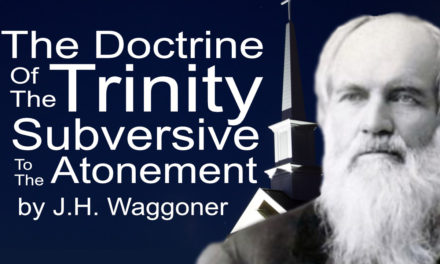
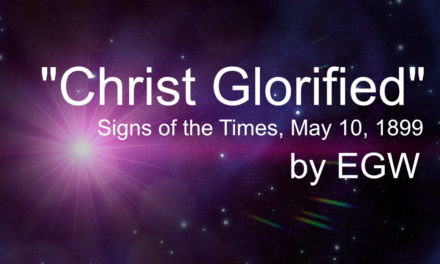
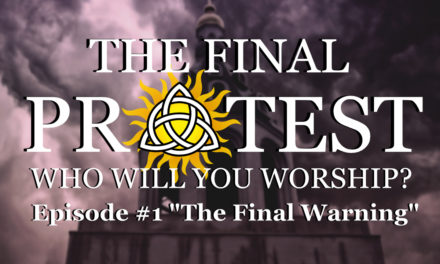
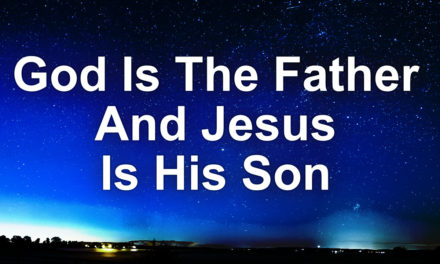

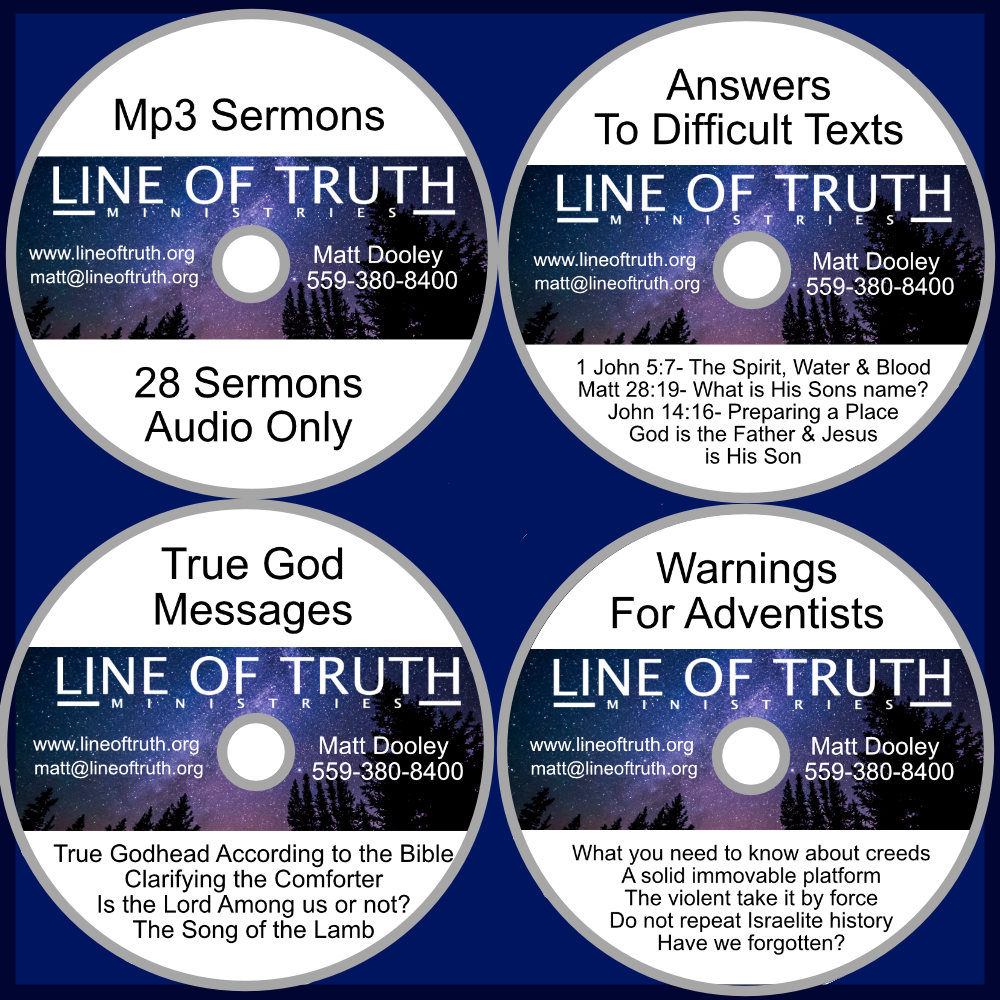

Recent Comments